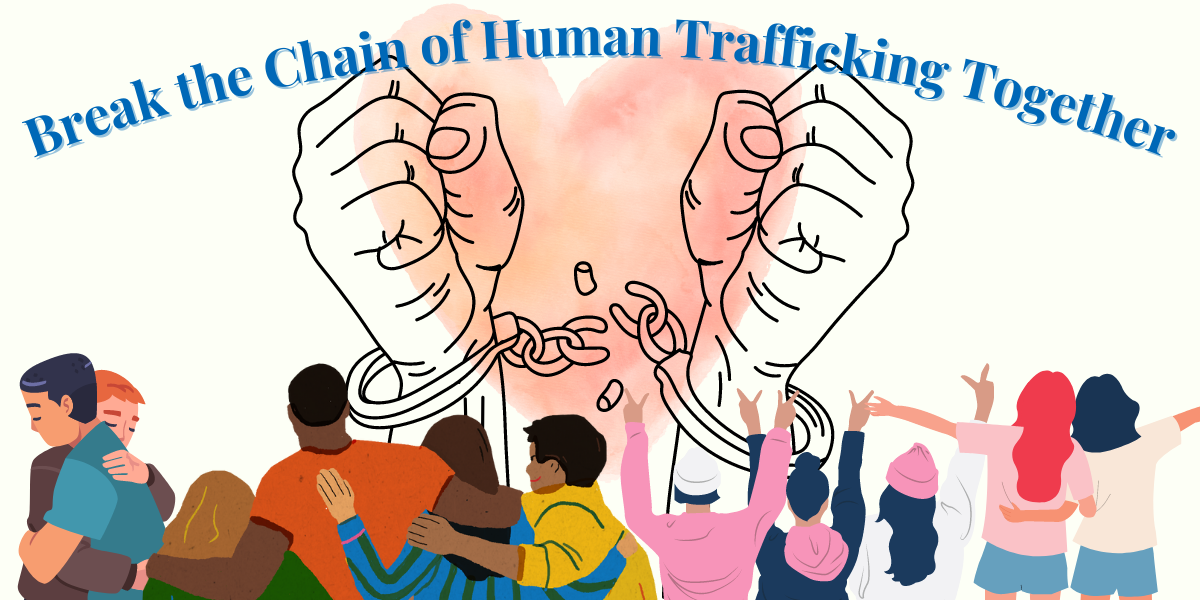
United Nation set every July 30th as “World Day Against Trafficking in Persons”
Upon hearing “trafficking in persons” or “human trafficking,” some may think it is happening in a distant world and does not affect our lives.
However, if there are “victim” countries, there are “perpetrator” countries, and we may be one of them.
Human trafficking is caused by war, poverty, lack of educational opportunities, and poverty.
2019 The ILO announced that child labor and trafficking remain critical concerns for global supply chains.
According to target 8.7 of the Sustainable Development Goals (SDGs), it takes immediate and effective measures to eradicate forced labor, end modern slavery and human trafficking, and secure the prohibition and elimination of the worst forms of child labor, including recruitment and use of child soldiers, and by 2025 end child labor in all its forms.
 The United Nations Office on Drugs and Crime (UNODC) reported that approximately 40.3 million people worldwide were victims of trafficking in 2016. Approximately 25% of trafficking victims were children, and 71% were women.
The United Nations Office on Drugs and Crime (UNODC) reported that approximately 40.3 million people worldwide were victims of trafficking in 2016. Approximately 25% of trafficking victims were children, and 71% were women.However, this figure is only the tip of the iceberg, as trafficking often occurs behind the scenes. In reality, many more victims are suffering around the world.
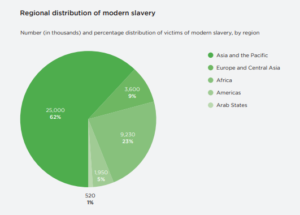 According to the “「Forced Labour and Forced Marriage (2017)」” published by the ILO, the Asia-Pacific region has the largest number of victims, accounting for 62% of the world’s total. The African region comes next with 23%, with Europe and Central Asia at 9%, the United States at 5%, and Arab countries at the end at 1%.
According to the “「Forced Labour and Forced Marriage (2017)」” published by the ILO, the Asia-Pacific region has the largest number of victims, accounting for 62% of the world’s total. The African region comes next with 23%, with Europe and Central Asia at 9%, the United States at 5%, and Arab countries at the end at 1%.(https://www.ilo.org/wcmsp5/groups/public/@dgreports/@dcomm/documents/publication/wcms_575479.pdf)
The Asia-Pacific region has the highest percentage of all forms of trafficking, and the percentage of victims by content is as follows;
Sexual exploitation 73%
Forced labor 68%
Forced marriage 42%
We should never dismiss human trafficking as “someone else’s affair.”, and these numbers cannot be overlooked as we work in the Asia-Pacific region.
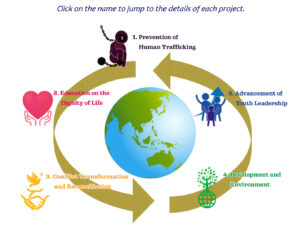 The ACRP has identified the combating of trafficking in persons as one of our flagship projects.
The ACRP has identified the combating of trafficking in persons as one of our flagship projects.The Philippines and Indonesia, in particular, where many cases of human trafficking are being reported, are determined to eradicate human trafficking cases through mental care programs for the victimized women and girls and through offering training courses for caretakers.
Human trafficking is not an exclusive problem in the developing countries. The developed countries, regarded as the beneficiaries of human trafficking, bear responsibility for curbing the cases of human trafficking throughout the region.
ACRP, led by Asia and the Pacific Women of Faith Network (APWFN) and Religions for Peace Philippines, carries out an advocacy program for anti-human trafficking.
In particular, the Asia Pacific Women of Faith Network has been working with national chapters to raise awareness against trafficking in persons by conducting online seminars and producing an E-Book.
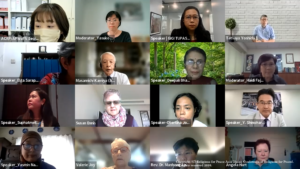 In September 2022 the Asia Pacific Women of Faith Network held an online seminar titled “Tackling Human Trafficking in Asia: Challenges and Best Practices.”
In September 2022 the Asia Pacific Women of Faith Network held an online seminar titled “Tackling Human Trafficking in Asia: Challenges and Best Practices.”We learned that Human trafficking had become an increasingly urgent crime against humanity in many countries, both as sender and recipient. Human Trafficking is one violation of human dignity.
Education, skills, and employment that cause poverty are some of the things that cause human trafficking, social and economic injustice, and the weaknesses of legal enforcement.
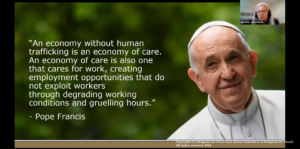 Religious leaders, women, and men, as well as young people, cannot remain silent. All must work with various stakeholders: government, civil society, schools, campuses, and the media to prevent, overcome and recover the victims.
Religious leaders, women, and men, as well as young people, cannot remain silent. All must work with various stakeholders: government, civil society, schools, campuses, and the media to prevent, overcome and recover the victims.For example, trauma prevention is also required to cure anyone with a negative experience like this. A family program that fosters relationships is one strategy to lessen the number of victims of human trafficking.
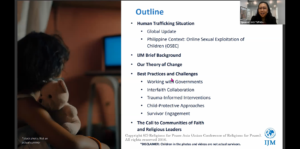 APWoFN, both in each country and collectively, must strengthen the network and collaborate with all stakeholders in a joint movement to prevent, overcome and carry out breeding processes.
APWoFN, both in each country and collectively, must strengthen the network and collaborate with all stakeholders in a joint movement to prevent, overcome and carry out breeding processes.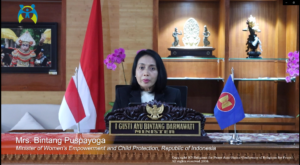 Lobbying and advocacy need to be strong. For this reason, there is a need for lobbying and advocacy training as well as continuous outreach to the local and national communities through schools, campuses, religious communities, and groups in society.
Lobbying and advocacy need to be strong. For this reason, there is a need for lobbying and advocacy training as well as continuous outreach to the local and national communities through schools, campuses, religious communities, and groups in society.A digital report of the seminar is currently being prepared. It will be posted on the ACRP website as soon as it is ready.
The ACRP is an interfaith, interdenominational coalition in the Asia-Pacific region working on global issues.
We will continue to work with government, activists and organizations that address the issue of human trafficking until it is eliminated from the world.
The ACRP is an interfaith, interdenominational organization working on global issues in the Asia-Pacific region.
We will continue to work with activists and organizations that address the issue of human trafficking until it is eliminated from the world.
See our achievement:
A Virtual Symposium on Tackling Human-Trafficking in Asia: Challenges and Best Practices (September 29th, 2022):>>>
A Virtual Symposium on The Reality of Human Trafficking in Asia Day2 Highlight Video (January 15, 2021):>>>
A Virtual Symposium on The Reality of Human Trafficking in Asia Day1 Highlight Video (January 14, 2021):>>>
A Virtual Symposium on Modern-Day Slavery Day 2 Highlight Video (June 23, 2020):>>>
A Virtual Symposium on Modern-Day Slavery Day 1 Highlight Video (June 22, 2020):>>>
E-Book 2020:>>>
